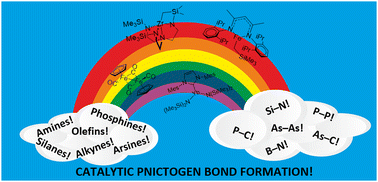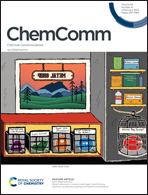Recent advances in catalytic pnictogen bond forming reactions via dehydrocoupling and hydrofunctionalization
Abstract
An examination of several catalytic reactions among the group 15 elements is presented. The connections between the chemistry of the pnictogens can sometimes be challenging, but aspects of metal–pnictogen reactivity are the key. The connecting reactivity comes from metal-catalyzed transformations such as dehydrocoupling and hydrofunctionalization. Pivotal mechanistic insights from E–N heterodehydrocoupling have informed the development of highly active catalysts for these reactions. Metal–amido nucleophilicity is often at the core of this reactivity, which diverges from phosphine and arsine dehydrocoupling. Nucleophilicity connects to the earliest understanding of hydrophosphination catalysis, but more recent catalysts are leveraging enhanced insertion activity through photolysis. This photocatalysis extends to hydroarsination, which may also have more metal–arsenido nucleophilicity than anticipated. However, metal-catalyzed arsinidene chemistry foreshadowed related phosphinidene chemistry by years. This examination shows the potential for greater influence of individual discoveries and understanding to leverage new advances between these elements, and it also suggests that the chemistry of heavier elements may have more influence on what is possible with lighter elements.

- This article is part of the themed collection: Chemical Communications HOT Articles 2023


 Please wait while we load your content...
Please wait while we load your content...